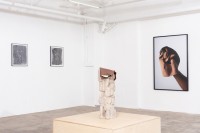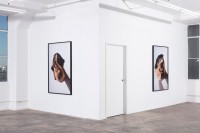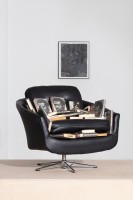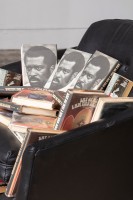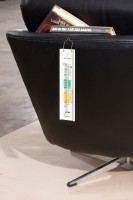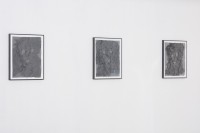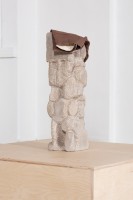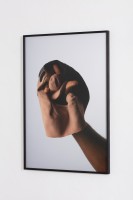FALSE HYDRAS
JOAN, Los Angeles
March 4 – June 19, 2021
JOAN is pleased to present FALSE HYDRAS, a solo exhibition of new sculpture, photography, and print works by artist, educator, and poet Arnold J. Kemp. Kemp has been making and exhibiting critically engaged art about race, sexuality, appropriation, and authorship for the past 25 years in tandem with his distinguished career as an educator, most recently as Dean of Graduate Studies at the School of the Art Institute of Chicago (SAIC). Kemp is often described as an artist’s artist, but he has found his greatest kinship with writers, specifically those affiliated with the New Narrative Movement out of San Francisco.
About New Narrative, Kemp writes in his essay “Situations,” published in the anthology From Our Hearts To Yours: New Narrative as Contemporary Practice (2017), “These artists seemed to be bridges between artists and writers and sensibilities and concerns that were queer, local, and rooted in narratives that probed collective fictions of persons, personality, and sexual politics.”
Kemp’s interest in fractured biographic narrative comes up throughout his show at JOAN, beginning with his title for the exhibition, FALSE HYDRAS. A hydra here refers to a fictional character in gaming culture invented by a blogger also named Arnold Kemp. It’s a character that eats other characters and absorbs their memories.
A second Arnold Kemp avatar is invoked in one of the exhibition’s central works, Mr. Kemp (Yellowing, Drying, Scorching), consisting of a found, mid-century style, black vinyl chair holding 38 copies of the 1972 novel Eat of Me: I am the Savior on its seat and wedged into its sides. Here, “Arnold Kemp” is the author of the book, which follows a young revolutionary in Harlem looking to avenge the death of a spiritual leader, and which was written in a style that theorist Michele Wallace has described as “black macho.”
The artist’s grandfather—yet another Arnold Kemp—appears in the sculpture, 1984, a limestone pillar that the artist began to carve in the titular year but did not finish. Draped over the pillar is a pair of brown shorts that belonged to the artist’s father and were made by his grandfather, who worked as a tailor in the Bahamas. The flip phone wedged into the base of the sculpture is from a past performance that the artist made with his father, which deals with the difficulties of communication. Like Mr. Kemp (Yellowing, Drying, Scorching), this work can also be understood as a self portrait—one that traces the internal and external signifiers of black masculinity.
Scholar Sampada Aranke has written of Kemp’s work: “Ardently resistant to the modes of capture and captivity brought about by essentialism and commodification, his practice slides into the realm of the poetic, imaginative, and playfully combative elements of conceptualism.” These qualities of resisting commodification and unsettling identity remain central to Kemp’s work with masks, a common device that he’s used in sculptures, photographs, drawings, and prints, from early graphite drawings of patterned African masks to later photographs of himself in KKK hoods made from richly colored West African fabrics.
In the same vein, nine works from Kemp’s series INDEX (2020) hang along the west wall of JOAN’s gallery space, each resembling a hallucinatory, ghostly face. The works are monotypes printed from crumpled aluminum foil that has been shaped with holes for eyes and mouths and printed on textured, antique paper from the early 19th century.
Another series of works on view include the large-scale photographs, FUNNY HOUSE (SPEECH ACTS) (2019), close-up shots of the artist’s hands performing a rubber Fred Flintstone mask, balling it up and spreading his fingers through its openings. The hand gestures form the composition of each work, with outstretched fingers and tight fists creating a striking interplay between mask and hand.
The final work in the exhibition is I would survive, I could survive, I should survive, a notecard on the floor of the gallery, handwritten with the title text. The use of first-person pronoun here is jarring: there’s a hesitancy in Kemp’s triple repetition of his effort to survive; but this is countered by Gloria Gayner’s gay disco anthem, which plays to a room of apparitions. Between these competing words we begin to make out Arnold J. Kemp through all of his many embedded determinants, whether they lurk in the social, the political, or his personal narrative.
FALSE HYDRAS – Virtual Conversation: Saturday, May 8, 2021: Arnold Kemp, Ian Cooper, and Hamza Walker from JOAN on Vimeo.
Virtual Book Club: Sunday, May 23, 2021: Gregg Bordowitz, Arnold Kemp & Lynne Tillman discuss the book, Eat of Me, I am the Savior. from JOAN on Vimeo.


